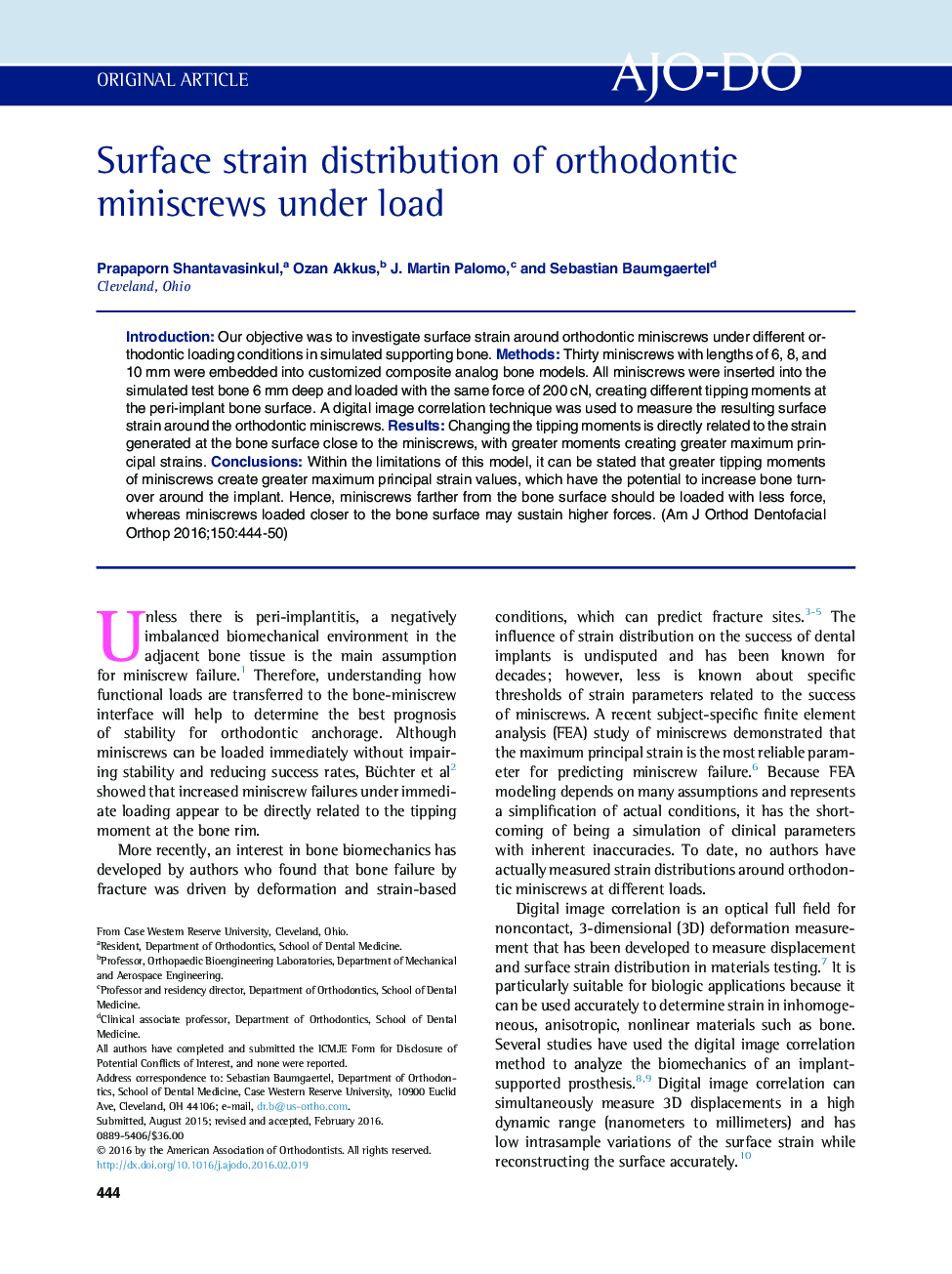| Article ID | Journal | Published Year | Pages | File Type |
|---|---|---|---|---|
| 3115225 | American Journal of Orthodontics and Dentofacial Orthopedics | 2016 | 7 Pages |
•This is the first study to use digital image correlation method for orthodontic miniscrews.•This allows actual measurement of surface strain vs simulation or computation.•Greater implant head-to-bone distance was associated with greater tipping moments.•Greater tipping moments increase maximum principal strain on bone, triggering resorption.•Greater mini-implant protrusion from bone requires less force to be applied clinically.
IntroductionOur objective was to investigate surface strain around orthodontic miniscrews under different orthodontic loading conditions in simulated supporting bone.MethodsThirty miniscrews with lengths of 6, 8, and 10 mm were embedded into customized composite analog bone models. All miniscrews were inserted into the simulated test bone 6 mm deep and loaded with the same force of 200 cN, creating different tipping moments at the peri-implant bone surface. A digital image correlation technique was used to measure the resulting surface strain around the orthodontic miniscrews.ResultsChanging the tipping moments is directly related to the strain generated at the bone surface close to the miniscrews, with greater moments creating greater maximum principal strains.ConclusionsWithin the limitations of this model, it can be stated that greater tipping moments of miniscrews create greater maximum principal strain values, which have the potential to increase bone turnover around the implant. Hence, miniscrews farther from the bone surface should be loaded with less force, whereas miniscrews loaded closer to the bone surface may sustain higher forces.
